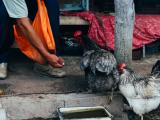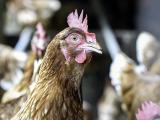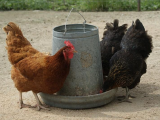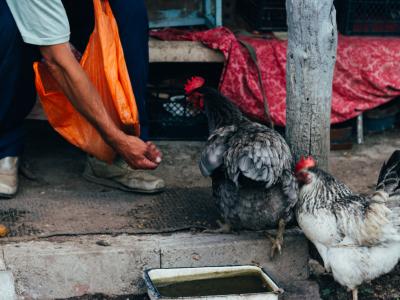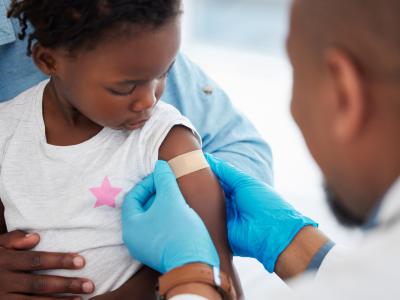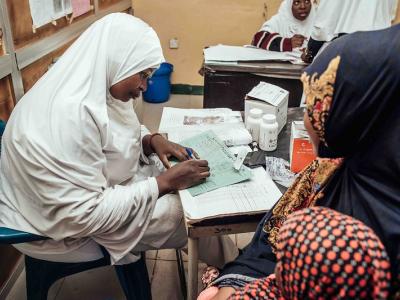Eight more H7N9 influenza cases have been reported from four of China's provinces over the past 3 days, signaling that cases may be leveling off from a burst of infections that appeared to coincide with Lunar New Year activity.
The cases are from four Chinese provinces, according to official notices from Hong Kong's Centre for Health Protection (CHP) and provincial health department notices translated and posted by the FluTrackers infectious disease news message board.
Provincial health ministry reports
Three of the newly confirmed infections involve patients from Guangdong province, one of the main H7N9 hot spots during the second wave of infections. They include a 4-year-old girl, a 79-year-old man, and a 44-year-old man.
Hunan and Anhui provinces each reported two cases. Hunan's two case-patients include a 46-year-old man whose infection was first reported on Feb 15 and a 64-year-old man whose illness was reported today. The patients from Anhui are a 14-year-old girl whose infection was reported on Feb 15 and a 63-year-old man whose positive H7N9 test was reported the following day.
The eighth case-patient is an 84-year-old man from Jiangsu province whose infection was reported yesterday.
The CHP, which issued statements today and yesterday announcing seven of the new cases, said the patients are receiving treatment in hospitals.
Reports of eight more cases from China lift the number of cases reported in the outbreak's second wave to 221, compared with 136 reported during the first wave. Also, the new reports boost the overall outbreak total to 357, according to FluTrackers' running total.
WHO details latest confirmations
In other developments, the World Health Organization (WHO) today posted two updates on H7N9 cases in China, one on seven reports it received from the country on Feb 13 and one on an infection in a Chinese traveler to Malaysia, the first to be detected outside China.
In the report on the seven cases on the mainland, the WHO said all of the patients are male, ranging in age from 8 to 84 years. All of them have a history of exposure to live poultry. Three are hospitalized in critical condition, three are listed as severe, and one patient—an 8-year-old boy—has a mild infection.
Illness onset dates ranged from Jan 28 to Feb 6, according to the WHO.
The WHO's report on the visitor to Malaysia contained some new details but confirmed other reports. Based on information it received from Malaysia's health ministry, the WHO said the 67-year-old woman was treated in Guangdong for fever, cough, flu, fatigue, and joint pain 4 days before she traveled to Malaysia. The timing of symptom onset and her travel dates suggest that she was probably exposed to the virus before she arrived in Malaysia.
She and her tour group, which included family members, stayed overnight in Kuala Lumpur upon their Feb 3 arrival in Malaysia and then visited Sabah from Feb 4 to 6.
Malaysia's health ministry is investigating the woman's illness, tracing her contacts, and sharing information with Chinese health officials, the report said.
The WHO reiterated its assessment that community spread of the virus from exported H7N9 cases in travelers is unlikely, given that H7N9 so far doesn't transmit easily among humans. It said more sporadic cases are expected in China and possibly neighboring countries, and it urged travelers to countries with known outbreaks to avoid live poultry settings.
Officials institute more poultry controls
In poultry developments, Guangzhou, capital of Guangdong province, on Feb 15 temporarily closed poultry markets for 2 weeks to control the spread of H7N9, according to a Feb 14 Associated Press (AP) report. The announcement appeared on provincial government microblog.
The province, along with Zhejiang province, has been among the hardest-hit areas, especially in the second wave of infections.
In other developments, Vietnam's government is stepping up efforts to prevent the spread of the virus to its poultry, according to recent media reports. The country's agriculture ministry, after a meeting with officials on Feb 13, announced a ban on Chinese poultry, Than Nien News, a Vietnamese media outlet, reported on Feb 14. During the meeting authorities aired concerns about H7N9 detections in people and poultry in China's Guangxi province, which borders northern Vietnam.
Local officials have been ordered to boost surveillance and test birds in poultry markets in Vietnam's northern region, according to the report.
See also:
Feb 16 CHP statement
Feb 17 CHP statement
Feb 17 WHO statement on Feb 13 Chinese cases
Feb 17 WHO statement on Malaysian case
FluTrackers human H7N9 case count
Feb 14 AP story
Feb 14 Thanh Nien report


